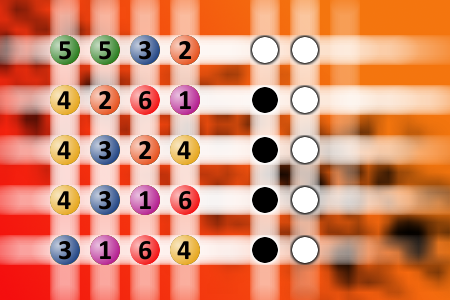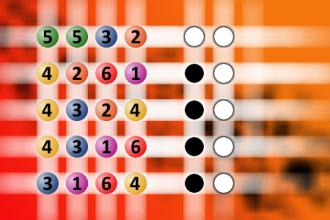What a winning combination?
The computer chose a secret code (sequence of 4 digits from 1 to 6). Your goal is to find that code. Black circles indicate the number of hits on the right spot. White circles indicate the number of hits on the wrong spot.
Almost at the end of the week? Check out these jokes to help you survive!
I took the batteries out of my carbon monoxide detector today…
The loud beeping was giving me a headache and making me feel sick and dizzy!
What's the difference between a well-dressed man on a bike and a poorly dressed man on a unicycle?
Attire.
Me: What's the wifi password?
Barman: You need to buy a drink first.
Me: Okay, I'll have a coke.
Barman: Is Pepsi okay?
Me: Sure. How much is that?
Barman: £3.
Me: There you go.
So what's the wifi password?
Barman: You need to buy a drink first.
No spaces, all lowercase! Three men are on a boat They have four cigarettes but nothing to light them with.
So?
So they throw one cigarette overboard and the boat becomes a cigarette lighter.
Got myself a takeaway coffee today.
I asked if I could pay by card.
The waitress said, "Yes of course.
What have you got?"
I said, "The four of clubs!"
Did you hear about the plan to prohibit the use of Roman numerals?
I for one, think it's a terrible idea.
My wife told me she couldn't stay married to a cross dresser.
So I packed her things and left.
Husband takes his wife to a disco, theres a man on the dance floor, moonwalking, break dancing, head spins, the works. Wife turns to her husband & sighs "You see that man?
25 years ago he asked me to marry him & I said no!" Husband says "It looks like he’s still out celebrating!"

